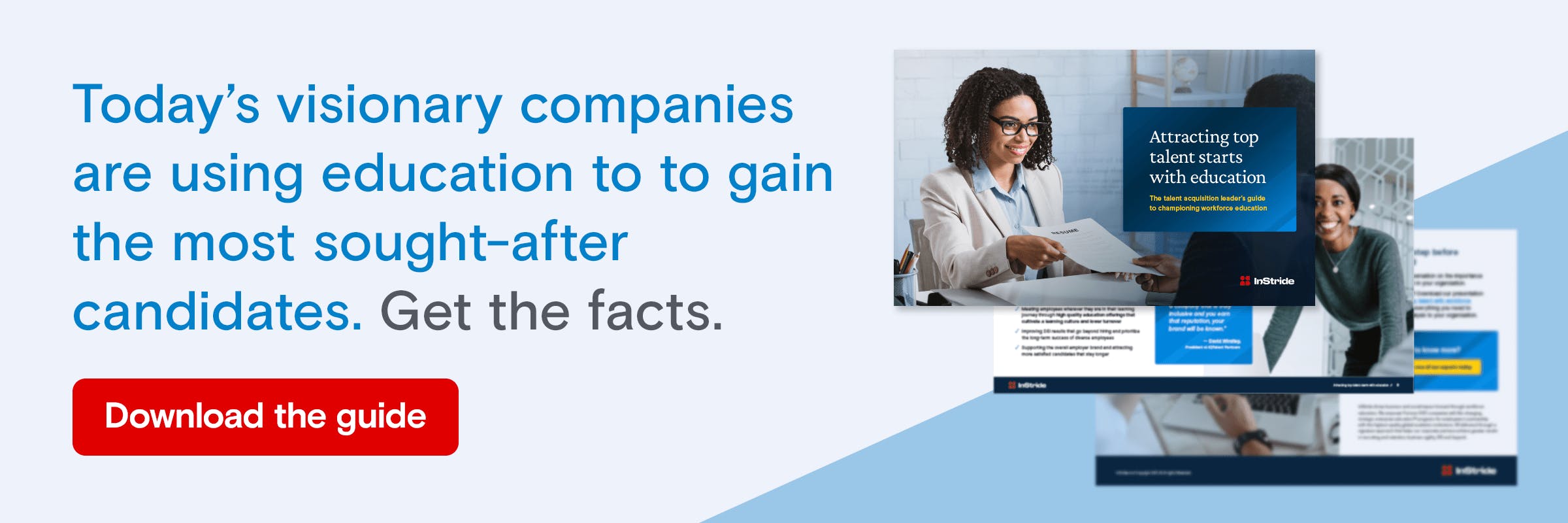The need for greater diversity, equity and inclusion (DEI) in the workplace is top-of-mind for nearly every business. And although change can’t happen overnight, many organizations have made DEI a priority, leading to groundbreaking initiatives that are setting the foundation for a more equitable future.
As organizations continue to ramp up these efforts, the benefits of workplace diversity have become even more apparent. Aside from the more obvious advantages, such as improved innovation and employee engagement, having a more diverse workforce can also make a huge positive impact on a company’s employer brand.
In today’s ultra-competitive labor market, public perception of your brand can have a massive influence on job seekers and how they perceive your business as a potential employer. Let’s discuss how you can better promote your current DEI efforts to stand out to applicants and integrate diversity into your brand.
The impact of diversity, equity and inclusion on employer brand
Modern job-seekers are looking for more than just the right position and salary. They place a heavy emphasis on factors that contribute to an “emotional salary” — these are things such as flexible working hours, growth opportunities, corporate social responsibility and commitment to DEI.
Let’s zero in on DEI and break down some of the key effects this can have on your corporate identity:
- Brand reputation
A bad or false reputation is difficult to recover from and can cost millions in hiring and re-branding expenses. If your company is known to have disingenuous or lackluster workplace diversity practices, this can have a major effect on the way that current and prospective employees (and even customers) view your business. - Talent acquisition
Top talent seeks out employers that are diverse and foster inclusive and equitable working environments — one study shows that 76% of job seekers name diversity as an important factor when evaluating an employer. Failure to integrate DEI as part of your employer brand can paint the picture that diversity isn’t a priority to your company and its leadership. This has the potential to alienate job candidates — especially people who belong to underrepresented groups. - Customer acquisition
Many consumers prefer to support businesses that make a social impact and contribute to the greater good of society. In the same way that poor branding can influence potential job seekers, it can also have the same effect on your current or prospective customers. - Social impact beyond the workplace
We know that effective DEI practices can have a positive impact on your employees. But in many cases, these benefits extend beyond the bounds of your workforce and to their friends, family and greater community. From a branding perspective, this domino effect means you’re able to make a positive impression on people outside of your workplace through positive DEI initiatives.
How to integrate DEI into your employer branding strategy
To become a brand that’s known for its DEI efforts, it’s going to mean more than just updating your careers page or recruitment marketing materials. Most people, especially top job candidates, see through this.
DEI has to be core to your organization’s values — everything from company culture to recruitment efforts and digital presence have to be aligned on your commitment to DEI. These types of company-wide efforts are what fuel a true commitment to diversity that can be felt internally by employees and externally by job candidates when they’re interviewing with you.
Below, we’ve outlined a few best practices to keep in mind:
- Be authentic
Authenticity is key to any DEI initiative. Far too many organizations have capitalized on the subject with the intent to do good but failed to deliver on their promises of driving meaningful change. Not only does this approach damage employee perception of your company, but it also negatively affects how people outside of your organization view your brand. When it comes to DEI, words have to be backed up by genuine action and accountability. - Use mindful imaging
While it’s important to accurately represent your employee base in branding materials, be careful with how you do so. Relying too heavily on tokenizing images can make your brand feel pandering or manipulative. Instead, focus on representing the diversity of your workforce in a way that’s truly reflective of reality. - Clearly communicate your DEI initiatives
By now, your organization has likely already made changes to advance workplace diversity and better support underrepresented talent.
Do you offer flexible working hours for parents? A strategic workforce education program? Diversity-specific mentorship and sponsorship opportunities? Accessible office spaces for disabled employees?
Your DEI initiatives can only be effective if both current and prospective employees are aware of them. From an employer branding perspective, it’s critical to evaluate your current recruitment marketing channels through the lens of a prospective job applicant. Information on your existing and future DEI efforts should be clearly communicated and easily accessible. - Continuously update what DEI means at your company
DEI meant something very different 20 years ago. As our understanding of what these terms mean continues to expand, so should our efforts to create work environments that support these changes. Your organization needs to remain flexible and be prepared to make policy changes and update your DEI standards as the needs of your workforce evolve.
Becoming a company that’s known for its commitment to DEI takes time. Even the world’s most recognizable brands aren’t able to achieve this overnight. However, if DEI is truly a priority for your company, it’s worthwhile to identify how these efforts can be leveraged to support your employer branding strategy. The long-term benefits are well worth the wait.
Did you know? Many leading organizations leverage education as a tool for furthering workplace DEI. Find out how by downloading this guide, How employee education is transforming DEI.


